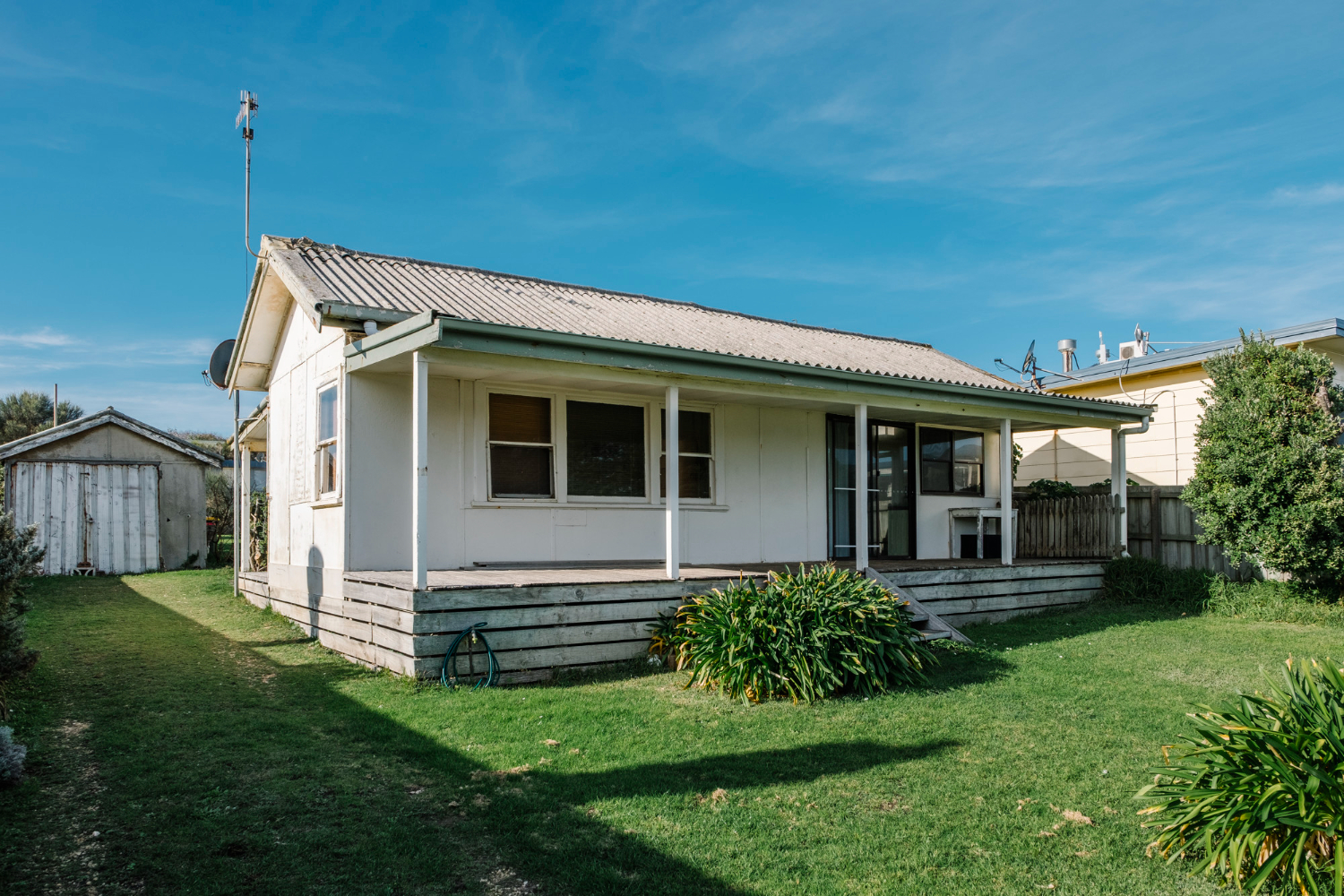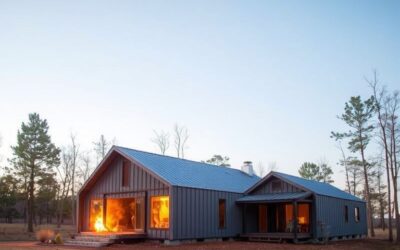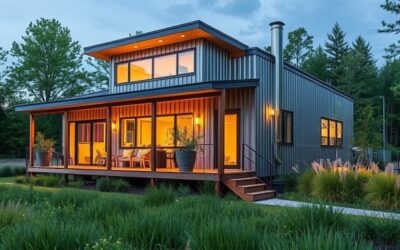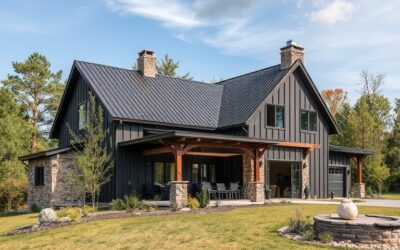Ready to build your dream home? Let’s see how steel stacks up against traditional materials—and why it might be your smartest choice yet. One of the most significant decisions you’ll face is selecting the right construction material. While traditional building materials like wood and brick have been used for centuries, all-steel construction is becoming increasingly popular. This modern approach offers various advantages that are worth considering.
Building with steel is different from traditional methods in many ways. It’s known for its remarkable strength and durability, making it a viable option for those looking to invest in a long-lasting home. But the benefits don’t stop there. All-steel homes also promise faster construction times and lower maintenance costs, which can save you money in the long run. Additionally, the environmental benefits of steel construction make it an attractive choice for eco-conscious homeowners.
As you explore your options, it’s important to understand how all-steel homes stack up against traditional construction methods. This comparison will help you make an informed decision that meets your needs for safety, efficiency, and sustainability. In this article, we’ll delve into the key areas where these two construction types differ, providing you with valuable insights along the way.
Durability and Longevity: Steel vs. Traditional Materials
Looking for a home that lasts? Steel’s unmatched durability outshines wood and brick, standing strong against everything from termites to tough weather. Steel is incredibly strong and can withstand extreme weather conditions, including heavy winds, snow, and even earthquakes. Wood, on the other hand, is prone to rot, termite infestations, and warping, which can weaken the structure over time. Brick is durable but can crack under certain conditions, requiring frequent repairs. Choosing steel for your home means opting for a material that’s built to last.
Because of its resistance to wear and tear, steel maintains its strength and integrity much longer than traditional materials. This longevity reduces the need for major renovations or replacements, saving you money in the long run. Investing in an all-steel home not only ensures a safe living environment but also provides a robust structure that can be passed down through generations. The unrivaled durability of steel makes it a wise choice for anyone seeking a long-lasting and reliable home.
Construction Speed and Efficiency: Which is Faster?
Speed and efficiency in construction are crucial factors to consider when building a home. Why wait? With pre-fabricated steel components, your home can be up and ready in no time—saving you months compared to traditional builds. One reason is that steel components are often pre-fabricated in factories to exact specifications. These pre-fabricated parts are then quickly assembled on-site, reducing construction time significantly. This efficiency helps to avoid delays and can have your home ready for occupancy much sooner than a traditional build.
In contrast, traditional construction methods like wood framing require more on-site labor and time. Each piece must be measured and cut on location, which can lead to inefficiencies and potential errors. Weather conditions can also impact traditional construction timelines, causing further delays. With steel, the streamlined process doesn’t just save time but also ensures a more precise build, reducing the likelihood of mistakes and rework. By choosing steel, you can move into your dream home faster, with the confidence that it was built efficiently and accurately.
Maintenance and Upkeep: Comparing Long-Term Costs
Less maintenance, more peace of mind. Steel homes resist rot, mold, and pests, meaning fewer headaches and more savings over time. Steel homes typically require far less maintenance compared to traditional homes built with wood or brick. Steel is resistant to rot, mold, and termites, which are common problems in wooden homes. This resistance significantly cuts down on the need for frequent repairs and treatments, saving you both time and money.
Traditional materials like wood need regular inspections and treatments to prevent damage from pests and environmental conditions. Brick homes may require periodic repointing and sealing to maintain their structural integrity. These maintenance activities can add up over the years, making traditional homes more expensive to upkeep. With steel, the low maintenance requirements mean fewer headaches and more savings in the long run. Choosing steel construction offers not just an initial reduction in costs but also sustained financial benefits over the years.
Environmental Impact: Sustainability of Steel Homes
Build green, live clean. Steel’s recyclability and energy efficiency make it the eco-friendly choice for today’s conscious homeowner. Steel construction offers significant environmental benefits that make it an excellent choice for those looking to reduce their carbon footprint. One of the key advantages is that steel is highly recyclable. Steel components can be recycled multiple times without losing their strength, which reduces the demand for raw materials and minimizes waste.
Additionally, steel homes generally have better energy efficiency due to their ability to incorporate high levels of insulation. This means that steel homes can help lower energy consumption, further reducing their environmental impact. Traditional construction methods often result in greater waste and are less recyclable, contributing more to landfills. By choosing steel, you’re making an eco-friendly decision that supports sustainability. The environmental benefits of steel homes make them a responsible choice for modern, eco-conscious living.
Conclusion
Choosing between all-steel construction and traditional building methods involves considering various factors like durability, construction speed, maintenance costs, and environmental impact. From our comparison, it’s clear that all-steel homes offer impressive advantages in each of these areas. The stainless steel wall panel’s strength and longevity provide a reliable and sturdy structure that stands the test of time. Faster construction processes mean you can move into your new home more quickly. Lower maintenance needs and costs make steel homes a practical long-term investment. Lastly, the sustainability benefits of steel contribute to a greener future.
Ready to build a home that combines strength, efficiency, and sustainability? Contact us at Wink Panels LLC today to discover how our all-steel construction can meet your needs and exceed your expectations. Make the smart choice for your family’s future with Wink Panels LLC.




